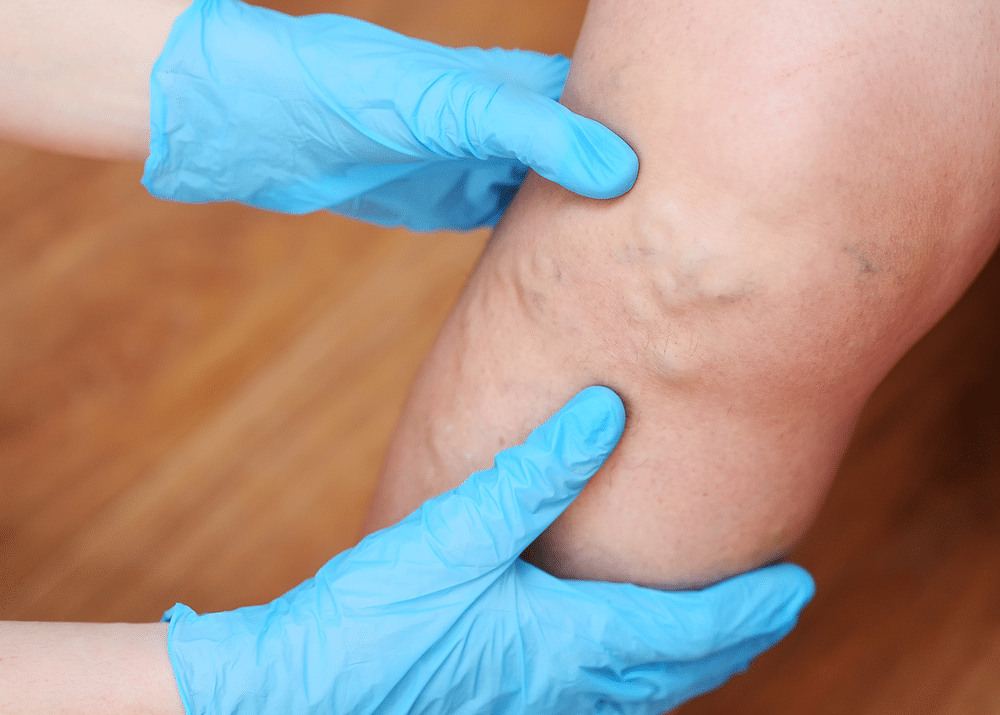Varicose veins affect up to 35% of all adults in the United States, including as many as 50% of women. These veins bulge above the…
The 4 Most Effective Treatments For Varicose Vein Removal

Varicose veins affect up to 35% of all adults in the United States, including as many as 50% of women. These veins bulge above the skin with a bluish-purple, ropelike appearance, causing self-consciousness and a variety of physical symptoms including pain, swelling, itching, and cramping.
Even though varicose veins rarely pose a danger to your health, the time may come when you want to get treatment. You may decide you no longer want to hide your legs on a bright summer day or find that you can’t relax in the evening because your leg is aching and cramping.
If your varicose veins have started to interfere with your day-to-day life, it’s time to start thinking about treatment. But, what are the best treatments for varicose vein removal, and which one is right for you?
Here’s what the science says.
1. Endovenous Laser Ablation Treatment
Endovenous laser treatment (EVLT) has become the “gold standard” for varicose vein removal.
The Process
ELVT is a simple outpatient procedure. Here’s what to expect:
- The vein specialist uses an ultrasound machine to map out the affected vein. It’s non-invasive and painless, similar to an ultrasound in an obstetrician’s or gynecologist’s office.
- After numbing the area, the specialist makes a tiny incision and inserts a catheter into the vein.
- The specialist guides the catheter into place with the help of the ultrasound machine.
- After injecting another numbing agent, the specialist will pull back the catheter and expose the tip of the laser.
- The laser heats up and the specialist slowly withdraws the catheter. As the vein heats up, it shrinks and closes, ultimately sealing shut.
Once the vein closes, the blood then reroutes through nearby healthy veins. The treated vein continues to shrink until it’s functionally invisible.
EVLT doesn’t require any sutures. Your vein specialist will simply apply pressure to the site and then apply a bandage. The entire procedure takes about an hour. Most people can resume their normal activity within the same day.
Recovery and Results
Your vein specialist will probably tell you to avoid extremely strenuous exercise for a while, but they’ll encourage you to walk to boost your circulation. You may need to wear gradient compression stockings as part of your recovery.
People who get EVLT may see results as quickly as a few days to a week after treatment. It may take weeks to months for the varicose vein to vanish completely, but once the vein seals shut, it’s almost always permanent.
2. Radiofrequency Ablation
Radiofrequency ablation (RFA) works similarly to EVLT. They both use focused energy to heat and close the affected vein, but RFA uses high-frequency radio waves instead of a laser.
Like EVLT, RFA is an outpatient treatment. It requires only one small incision and a catheter to deliver the heat source to the vein.
The recovery process is also similar to EVLT. You’ll need to get up and walk often, but hold off on serious sports until your vein specialist says it’s okay. Also, avoid prolonged sitting as much as possible.
RFA is about as effective as EVLT and has received similar patient satisfaction scores. EVLT tends to come out ahead in terms of visible results and comfort level, but neither is superior. They’re both safe and effective, involving fast recovery times and minimal discomfort.
3. Cyanoacrylate (VenaSeal)
Cyanoacrylate is a less well-known treatment for varicose veins. You may have heard it referred to as “vein glue” because it uses a special medical adhesive to close the affected vein. Some vein centers also refer to it by the brand name VenaSeal.
Like endovenous ablation, VenaSeal uses a small incision to send a catheter into the vein. The catheter is the delivery system for the medical adhesive.
VenaSeal is a simple, nearly painless outpatient procedure. It’s proven to be at least as effective as RFA and may be even more comfortable. The recovery time is short with easy aftercare that does not require patients to wear gradient compression stockings.
4. Microfoam Sclerotherapy
The name may sound intimidating, but microfoam sclerotherapy injections are one of the easiest ways of treating varicose veins.
With microfoam sclerotherapy, there’s no incision and no catheter. Instead, the vein specialist will inject a specially formulated chemical that foams inside the vein, damaging the vein walls.
The damaged vein seals itself shut, and the body naturally processes and flushes out the microfoam chemical. The entire procedure takes less than an hour and most people can get back to their regular activities within the same day.
Microfoam sclerotherapy is a proven effective treatment, permanently closing more than 90% of treated veins. Its success rate is comparable to other methods, including laser ablation, RFA, and VenaSeal.
Microfoam sclerotherapy is also convenient and comfortable, requiring no anesthesia with minimal to no discomfort. In clinical studies, only 4% of patients reported pain at the injection site.
Most patients find microfoam sclerotherapy very effective in reducing varicose vein symptoms including aching, throbbing, heaviness, and swelling in the legs. It also improves the appearance of varicose veins.
Most people only need one microfoam sclerotherapy treatment to see results. If your varicose veins are larger or more widespread, you may need to return for additional treatment.
Where to Learn More
If you’re concerned about your varicose veins and are considering treatment, it’s important to seek out the advice of a vein specialist, especially if your varicose vein symptoms interfere with your daily life.
My Vein Treatment’s specialist locator tool makes it easy to find a knowledgeable and experienced professional in your area. Reach out to a vein specialist today and learn about your treatment options.






Responses